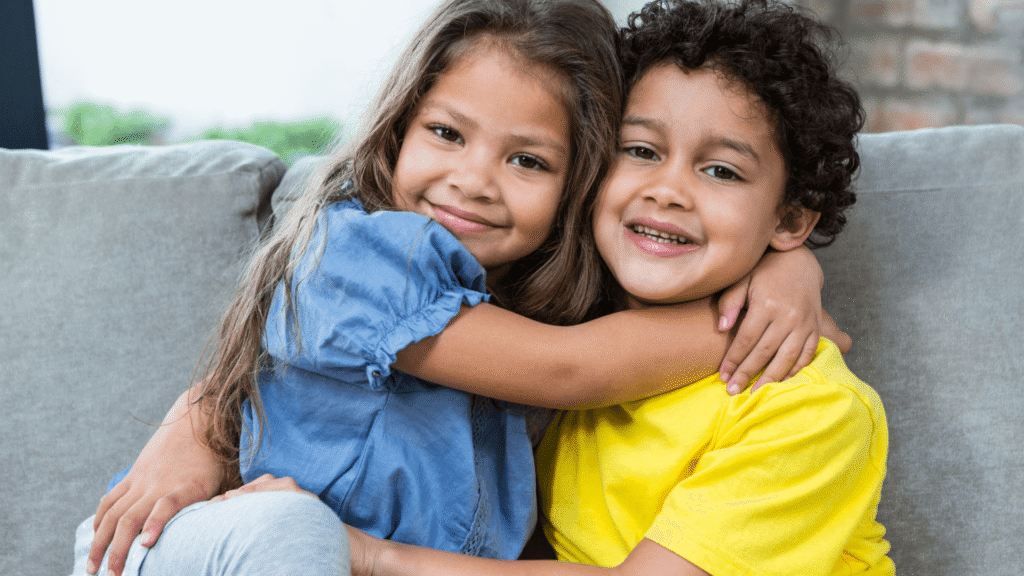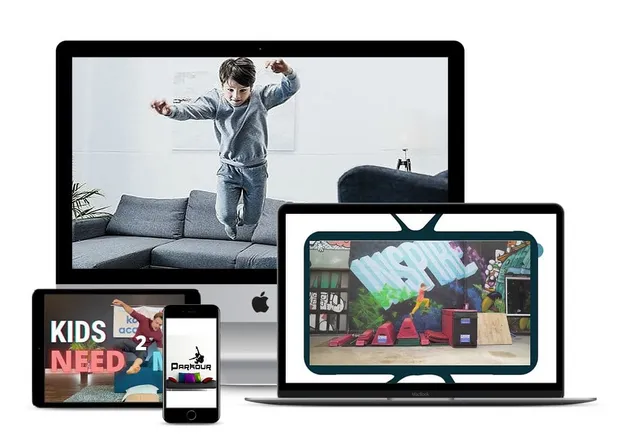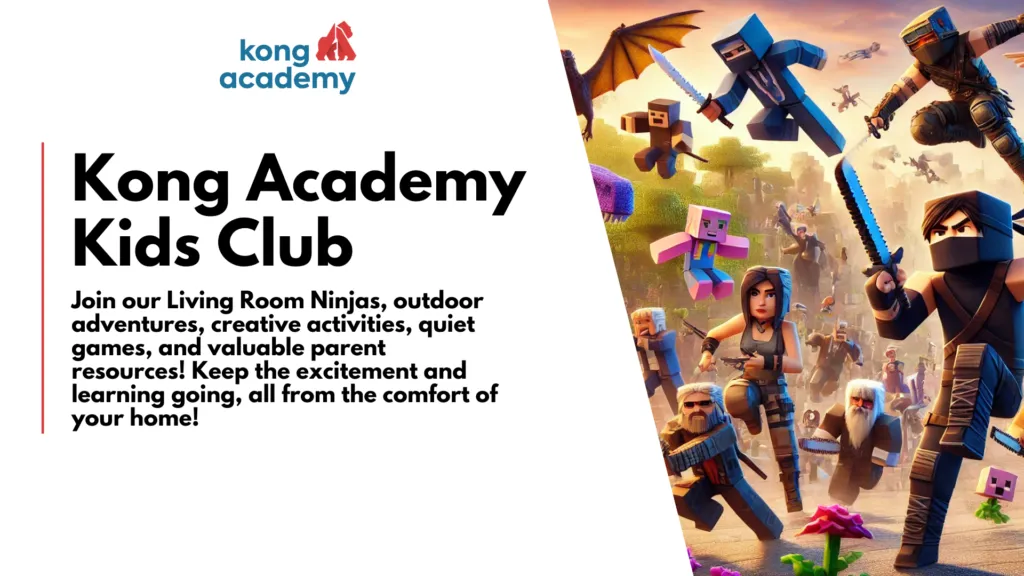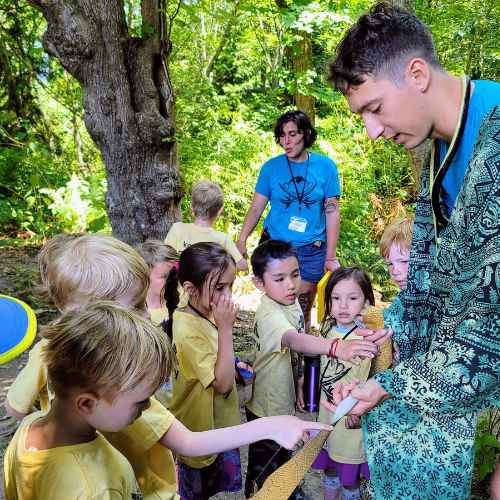
You ever catch your younger kid mimicking something their older, role model sibling just said (or did) and think, uh-oh? Maybe it was an eye roll, a too-mature joke, or the way they stormed off after being told “no.” Whatever it was, it served as a not-so-gentle reminder that your younger child is watching. Closely.
Let’s be honest, your younger children idolize their older siblings like full-time Swiftie fans idolize the singer; in the same way we once worshiped older cousins, teen babysitters, or that one super cool high schooler who could drive. Whether the older ones signed up for it or not, they’ve stepped into a starring role as one of their sibling’s most powerful role models.
Why Older Siblings Make Such Impactful Role Models
The relationship between siblings is one of the most powerful and complicated dynamics in a child’s life. It’s part friendship, part rivalry, part mentorship, and for the younger one, it’s often a masterclass in how to be a person in the world.
This is more a blueprint than simply a bond based on proximity or shared toys. A younger sibling watches the older one for cues on how to talk, how to respond, how to handle frustration, how to win, how to lose, how to stand up for themselves. They’re soaking it all in.
Even if your teen (or tween) rolls their eyes at the idea of being a “role model,” the truth is, they already are one. The question is whether they want to be an intentional one.
That’s why this conversation matters. Because when we help older kids see the influence they hold, we’re inviting them into a deeper understanding of themselves. We’re giving them a chance to rise to something bigger than just being the “older sibling.” And we’re helping them step into a role that’s built on empathy, strength, and leadership.
And yes, they’ll resist it at times. That’s part of the deal. But beneath the pushback is a quiet pride, because being looked up to, even if it feels awkward, is actually kind of amazing.
So the question for us parents becomes: how do we help our older kids understand the weight and wonder of that influence?
Who Are The Role Models In Your Child’s Life?
Pause for a moment and think… Who do you want your child to admire? Is it a teacher who makes time to listen? A neighbor who volunteers every weekend? Maybe it’s you. (And maybe it’s not, depending on the day!) The truth is, role models come in many forms: parents, older siblings, coaches, camp counselors, even fictional heroes or famous athletes.
But among all of them, it’s often the older sibling who has the most access, the most airtime, and (let’s be real) the most sway.
Why Older Siblings Make Such Impactful Role Models
Because younger kids are natural copycats. They imitate speech, mannerisms, and even emotional responses. Your older child slams a door in frustration? Their little brother’s gonna try it. Your teen shrugs and walks away when upset? Guess what pattern is getting absorbed.
Older kids set the tone without even realizing it. That’s why it’s worth having a heart-to-heart conversation—not just about what not to do, but about the power they do have to shape someone else’s world.
How To Start the Conversation (Without The Eye Roll)
Consider that this isn’t a lecture, you’re basically handing over the keys to their legacy. (No pressure there.)
Try something like this:
“Your little sister watches everything you do. To her, you’re the most exciting person on the planet. That’s a big deal. You don’t have to be perfect, but I’d love for you to think about what kind of example you want to set for her.”
That opens the door. And from there, you can explore what it means to be a strong role model, not just someone who looks good on the outside, but someone who walks the walk on the inside.
We hear the phrase “be a role model” tossed around a lot—on sports fields, in classrooms, and definitely in family conversations. But what does that really mean, especially for a kid who’s still figuring themselves out?
Being a role model doesn’t mean that someone needs to be flawless or never lose their temper or always make the “right” call. What it does mean is choosing to show up with intention and recognizing that someone younger is watching, listening, and absorbing more than you think.
Here’s How That Plays Out In Real Life:
Leads by example, especially when no one’s watching
It’s easy to behave when there’s an audience. But what about when you think no one’s paying attention? That’s when character shows. Maybe your teen gets off the bus and instead of blowing off homework, they sit down and knock it out without being asked. Or maybe they throw away their trash at the park even when no one’s around to say “good job.”
These moments don’t get applause, but they stick with the younger sibling watching from the backseat or playground bench.
Takes care of themselves physically and emotionally
Kids are inundated with messages that hustle is everything. That sleep is optional, that stress is normal, and that image matters more than inner peace. A strong role model pushes back against that noise. They make time for movement, even if it’s just stretching between classes or choosing to walk the dog instead of scroll. They say things like, “I’m feeling overwhelmed, so I’m going to take a break,” modeling emotional regulation without shame.
When younger siblings see this, they learn it’s okay to have needs, and even better to meet them.
Admits mistakes and takes ownership
Let’s say your teen forgot to pick up their little brother from soccer. Classic mess-up. What happens next teaches more than any lecture ever could. A strong role model says, “I messed up. I’m sorry. I’ll fix it.” They don’t make excuses or deflect the blame onto you for “not reminding them.”
Accountability is huge. And it shows younger kids that mistakes are part of life… It’s how you handle them that defines who you are.
Treats others with respect, even during conflict
There’s tension in every sibling relationship. Someone’s always borrowing something without asking or taking the last snack. A healthy role model doesn’t mean they never get annoyed, but it means they resist going for the jugular. They learn to say, “Hey, I didn’t like that,” instead of, “You’re so annoying.”
Respect during conflict is a skill many adults are still trying to master. If your older kid can start practicing it now, that’s leadership.
Listens (really listens) to those who are younger
There’s nothing more affirming to a younger sibling than being taken seriously. When a big brother stops playing Xbox to hear about their sister’s dream or a big sister turns down her music to help with math homework, they’re sending a loud message: You matter.
And it’s also not just the act of listening. It’s listening without correcting, without teasing, and without immediately turning the convo back to themselves. That’s the kind of attentiveness that makes someone a trusted role model.
Chooses presence over scrolling
We all know screens are magnetic. But when an older sibling consciously puts their phone away, especially during shared meals, family car rides, or bedtime wind-downs, it creates real connection. This is choosing to be here with the people in front of you, not banning phones. Presence is powerful. And it’s contagious.
Follows through, even when it’s inconvenient
Younger siblings don’t forget broken promises. If a big sister says she’ll come to the school play, and she flakes at the last minute, it stings. If an older brother says he’ll teach them how to skateboard this weekend, and suddenly he’s “too tired”? That erodes trust.
Healthy role models understand the impact of their words. When they say yes, they mean yes. And when they can’t follow through, they explain why and try to make it right.
None of this requires perfection, just intention
Let’s not pretend this is easy. Teens have a lot on their plates… school pressure, social dynamics, hormones, identity stuff, and they’re still growing into themselves. But being a role model isn’t about getting it all right.
It’s trying. About choosing to try again after a blowup. About being willing to show up, even when it’s messy. And when your older kid begins to understand that their everyday choices ripple outward, they start to tap into something really powerful: personal agency, connection, and the ability to shape a life bigger than their own.
The Little Things Make A Big Impression
Your older child doesn’t have to give a TED Talk on leadership to make an impact. Sometimes the most powerful lessons come from the smallest, most everyday actions:
- Choosing to eat a real lunch instead of skipping meals.
- Noticing when a younger sibling is upset, and asking why.
- Playing a board game, just because it makes the little one smile.
- Saying “sorry” without being prompted.
- Putting the phone down at dinner.
Every one of those choices adds a layer to the role model your child is becoming.
Role Models Aren’t Born, They’re Built
No one wakes up one day and becomes the ideal role model. It’s a process. It’s built moment by moment, decision by decision. And every time your older child chooses kindness, courage, or connection, they’re not simply helping out their younger sibling, they’re helping to shape the adult they’re becoming.
And that, truly, is something worth being proud of.
How Kong Academy Supports Kids In Becoming Positive Role Models
At Kong Academy, we understand the power of modeling. That’s why all of our after school and summer programs are designed to nurture responsible decision-making, social awareness, and self-control—skills that help kids step confidently into leadership roles, both at home and in the world.
Through physically active games, teamwork-based challenges, and playful scenarios, kids at Kong Academy practice what it means to lead with empathy, resolve conflict respectfully, and show up for others. Whether they’re climbing over imaginary lava or building a blanket fort basecamp, they’re learning how to become the kind of person a younger sibling would be lucky to look up to.
Come see what happens when kids learn to lead through movement, mentorship, and (of course) FUN.
Learn more about our summer camps and after school programs.
GET Access to the ULTIMATE PLAY DATE PACKAGE (Value: $49) for FREE!


7-Day Crystal Shard Adventure
Unleash your child’s potential with our 7-day crystal shard movement adventure!




